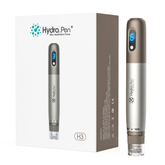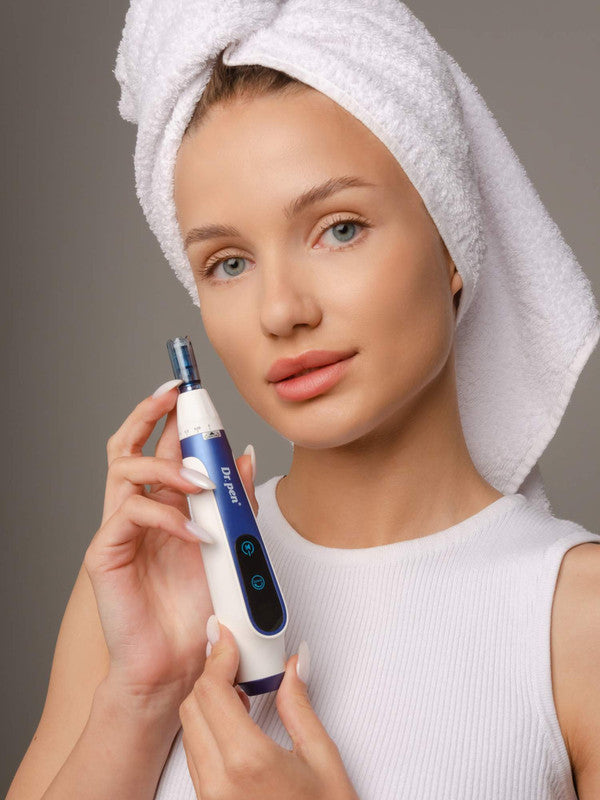Collagen is an essential part of the skin, responsible for keeping it strong yet elastic enough for movement. The more collagen the skin can produce, the more resilient it becomes to outside shocks and the better its appearance. However, levels of collagen production – and the overall amount of collagen in the skin – can vary widely based on a person’s lifestyle.
But what exactly destroys the skin’s collagen deposits? While the exact factors may vary depending on the patient, food intake, sun exposure, and natural causes are all likely culprits. These risks increase the amount of collagen breaking down in the body, and can cause signs like wrinkles and sagging skin to appear faster.
The Most Common Reducers Of Collagen In The Skin
Dermatologists will need to keep in mind that while these factors are the most likely causes of decreased collagen production, a patient’s own lifestyle, environment, and pre-existing conditions all factor heavily in collagen production. If a patient is already doing some form of skincare regimen, dermatologists will need to account for that as well.
Diet
Since collagen production is heavily influenced by the nutrients the body has access to, diet is one of the most likely culprits behind collagen degradation. The body does produce its own stores of collagen, but it’s critical to remember that this supply fluctuates depending on many factors and that proteins in general are necessary to a well-balanced diet.
Meats and poultry are excellent sources of collagen. However, one particular food type needs to be monitored for its intake: sugar. Large amounts of sugar break down elastin and collagen in the body, as well as overall worsening the appearance of the skin. Natural sugars such as the ones found in fresh fruit are excellent substitutes, with the option to replace refined sugar with variants like dark chocolate.
Sun Exposure
The skin is extraordinarily sensitive to UV exposure from the sun, with prolonged exposure breaking down large areas of the skin and making them more prone to develop conditions like skin cancer. One reason why this particular factor is so dangerous is that sun exposure doesn’t necessarily have to be direct: UV rays penetrate both cloud cover and even under the water.
Dermatologists should be on the lookout for this particular cause if their patient is an athlete or regularly takes trips abroad or to the beach. While sun exposure can be mitigated somewhat by using sunscreen with the required amount of SPF, avoiding sun exposure altogether by staying in the shade is the best choice.
Direct sun exposure can cause actual damage to the skin cells itself, making them less likely to produce elastin. Because elastin is a crucial part of what holds skin cells together, affected skin is also likely to experience dehydration.
Free Radicals
Free radicals are another common culprit behind collagen degradation since they can be caused by anything from pollution exposure to smoking. These habits are highly dependent on the patient’s environment and may not always be avoidable, which makes addressing this particular cause rather difficult.
One way that patients can lower their free radicals is by increasing the number of antioxidants in their bodies. This can be accomplished by eating a healthy diet with fruits and leafy greens, but the primary nutrient that should be acquired is Vitamin C.
Vitamin C can assist with controlling the number of free radicals inside the body, and it can even help stimulate the production of the body’s own natural antioxidants. Aside from neutralization, Vitamin C can also help control and mitigate any infections that may occur on the skin, which makes it less prone to conditions like acne and redness.
Aging
Collagen levels will naturally decrease as people age. Aging-related collagen degradation is possibly the most likely cause of collagen levels dropping and is an issue that will only compound the older the patient gets. In cases like these, medications and collagen supplements can be used if the patient wants to keep the healthy appearance of their skin.
Dermatologists can also consider other cosmetic and aesthetic procedures such as using dermal fillers to improve the appearance of the skin. Many facial fillers in particular contain active ingredients that help stimulate collagen production, and provide both short and long-term results.
These treatments are often non-invasive and can be applied within minutes, with minimal downtime and almost no pain. Postoperative care can also be reduced by the usage of medical tools and devices like microcannulas.
One method that’s steadily gaining traction for collagen and skin rejuvenation is PEP Factor products. Made from a proprietary blend of fibroblast growth factors and essential peptides, these products may help restore skin weathered from aging and restore its lost moisture and volume.
Regular applications may even help condition the skin to boost its own, possibly improving its appearance and overall structure.
But what exactly destroys the skin’s collagen deposits? While the exact factors may vary depending on the patient, food intake, sun exposure, and natural causes are all likely culprits. These risks increase the amount of collagen breaking down in the body, and can cause signs like wrinkles and sagging skin to appear faster.
The Most Common Reducers Of Collagen In The Skin
Dermatologists will need to keep in mind that while these factors are the most likely causes of decreased collagen production, a patient’s own lifestyle, environment, and pre-existing conditions all factor heavily in collagen production. If a patient is already doing some form of skincare regimen, dermatologists will need to account for that as well.
Diet
Since collagen production is heavily influenced by the nutrients the body has access to, diet is one of the most likely culprits behind collagen degradation. The body does produce its own stores of collagen, but it’s critical to remember that this supply fluctuates depending on many factors and that proteins in general are necessary to a well-balanced diet.
Meats and poultry are excellent sources of collagen. However, one particular food type needs to be monitored for its intake: sugar. Large amounts of sugar break down elastin and collagen in the body, as well as overall worsening the appearance of the skin. Natural sugars such as the ones found in fresh fruit are excellent substitutes, with the option to replace refined sugar with variants like dark chocolate.
Sun Exposure
The skin is extraordinarily sensitive to UV exposure from the sun, with prolonged exposure breaking down large areas of the skin and making them more prone to develop conditions like skin cancer. One reason why this particular factor is so dangerous is that sun exposure doesn’t necessarily have to be direct: UV rays penetrate both cloud cover and even under the water.
Dermatologists should be on the lookout for this particular cause if their patient is an athlete or regularly takes trips abroad or to the beach. While sun exposure can be mitigated somewhat by using sunscreen with the required amount of SPF, avoiding sun exposure altogether by staying in the shade is the best choice.
Direct sun exposure can cause actual damage to the skin cells itself, making them less likely to produce elastin. Because elastin is a crucial part of what holds skin cells together, affected skin is also likely to experience dehydration.
Free Radicals
Free radicals are another common culprit behind collagen degradation since they can be caused by anything from pollution exposure to smoking. These habits are highly dependent on the patient’s environment and may not always be avoidable, which makes addressing this particular cause rather difficult.
One way that patients can lower their free radicals is by increasing the number of antioxidants in their bodies. This can be accomplished by eating a healthy diet with fruits and leafy greens, but the primary nutrient that should be acquired is Vitamin C.
Vitamin C can assist with controlling the number of free radicals inside the body, and it can even help stimulate the production of the body’s own natural antioxidants. Aside from neutralization, Vitamin C can also help control and mitigate any infections that may occur on the skin, which makes it less prone to conditions like acne and redness.
Aging
Collagen levels will naturally decrease as people age. Aging-related collagen degradation is possibly the most likely cause of collagen levels dropping and is an issue that will only compound the older the patient gets. In cases like these, medications and collagen supplements can be used if the patient wants to keep the healthy appearance of their skin.
Dermatologists can also consider other cosmetic and aesthetic procedures such as using dermal fillers to improve the appearance of the skin. Many facial fillers in particular contain active ingredients that help stimulate collagen production, and provide both short and long-term results.
These treatments are often non-invasive and can be applied within minutes, with minimal downtime and almost no pain. Postoperative care can also be reduced by the usage of medical tools and devices like microcannulas.
One method that’s steadily gaining traction for collagen and skin rejuvenation is PEP Factor products. Made from a proprietary blend of fibroblast growth factors and essential peptides, these products may help restore skin weathered from aging and restore its lost moisture and volume.
Regular applications may even help condition the skin to boost its own, possibly improving its appearance and overall structure.





















